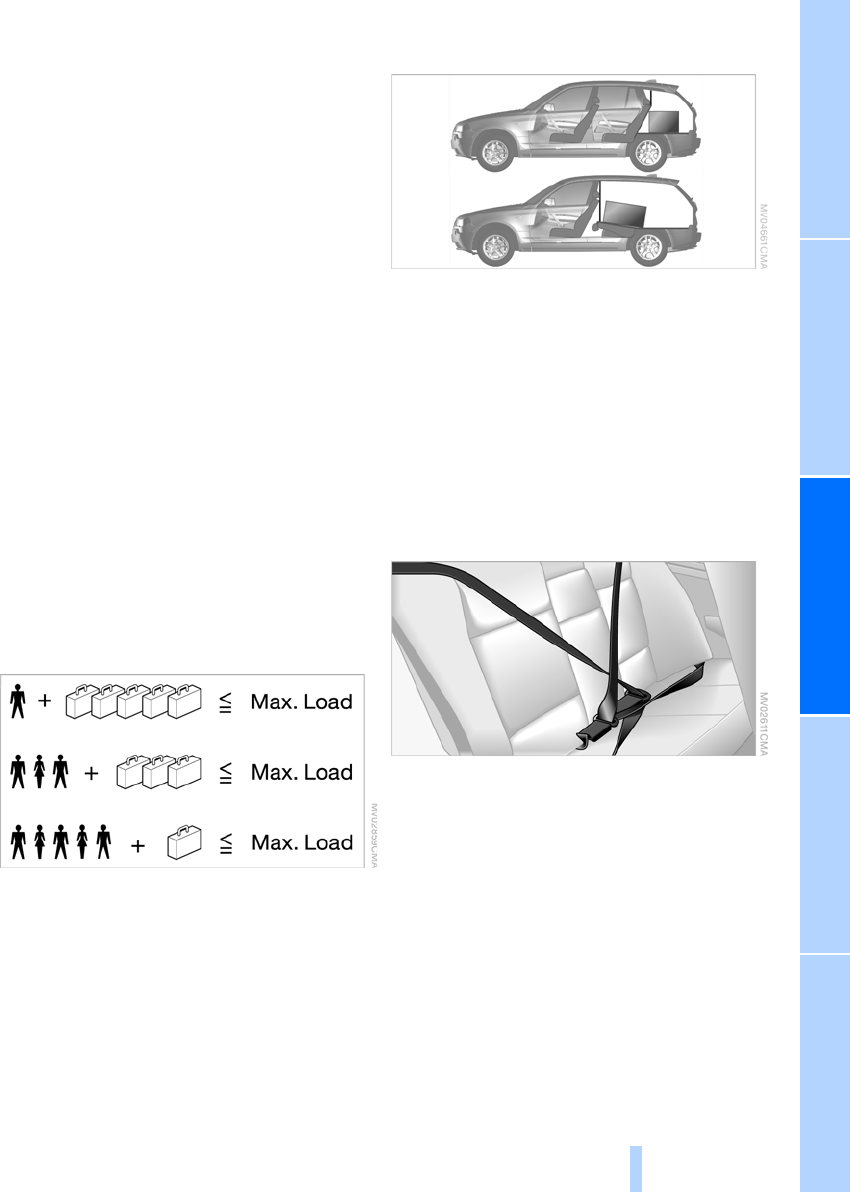
Reference At a glanceControlsDriving tipsMobility
79
3. Subtract the combined weight of the driver
and passengers from XXX lbs. or YYY kg.
4. The resulting figure equals the available
amount of cargo and luggage load capacity.
For example, if the XXX amount equals
990 lbs. and there will be five 150-lb. pas-
sengers in your vehicle, the amount of avail-
able cargo and luggage load capacity is
240 lbs.:
990 lbs. minus 750 lbs. = 240 lbs.
5. Determine the combined weight of luggage
and cargo being loaded into and/or onto the
vehicle. This combined weight may not
safely exceed the available cargo and lug-
gage load capacity calculated in step 4.
6. If your vehicle will be towing a trailer, part of
the load from your trailer will be transferred
to your vehicle. Consult the manual for
transporting a trailer to determine how this
may reduce the available cargo and luggage
load capacity of your vehicle.
Load
The permitted load is the total of the weight of
occupants and cargo/luggage. The greater the
weight of occupants, the less cargo/luggage
can be transported.
Stowing cargo
> To protect passengers, use the partition
net, refer to page 72.
> Load heavy cargo as far forward and as low
as possible, placing it directly behind the
rear seat backrests.
> Cover sharp edges and corners.
> Do not stack cargo higher than the upper
edge of the backrests.
> Items that could bump against the rear win-
dow while driving must be adequately cov-
ered.
> For very heavy cargo when the rear seat is
not occupied, secure each safety belt in the
opposite buckle.
Securing cargo
> Use the luggage net
*
or draw straps to hold
down small and lightweight luggage and
cargo, refer to page 73.
> For larger and heavier pieces, heavy-duty
cargo straps
*
are available from your BMW
Sports Activity Vehicle Center. These
heavy-duty cargo straps are attached using
the lashing eyes in the cargo area, refer to
page 73.
Online Edition for Part No. 01 41 0 012 213 - © 02/06 BMW AG


















